Introduction
The human brain is often compared to a biological computer, processing sensory information and constructing a coherent experience of reality. But is our perception truly an accurate reflection of the objective world, or is it merely an interface, a reality-rendering machine? Is it possible that the brain is just a reality-rendering artificially designed system? Modern neuroscience and cognitive science suggest that what we see, hear, and feel is not reality itself but a processed and interpreted version tailored to our survival and interaction with the environment.
This article explores how the brain constructs our perception, compares neural pathways to electronic circuits, and delves into the emerging field of neuromorphic computing, which seeks to mimic the brain’s architecture and function. If we can create artificial consciousness in the future, does that imply our own consciousness is machine-generated? Could our entire nervous system itself be an artificial construct?
How the Brain Constructs Perception
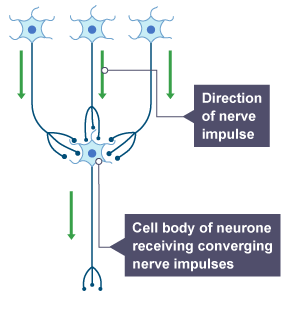
Color: A Construct of the Mind
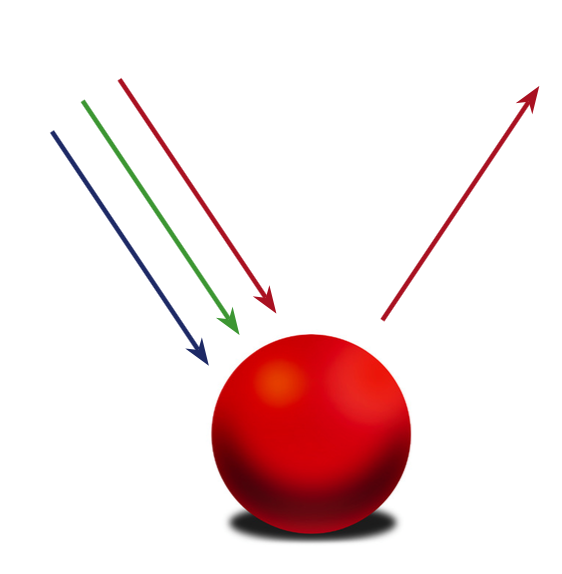
Our perception of color is an illusion created by the brain. Objects do not inherently possess color; rather, they reflect certain wavelengths of light that are interpreted by our brain. For example, a red ball does not have “redness” as an inherent property. Instead, its surface reflects light in the red wavelength range, which is detected by photoreceptor cone cells in the retina. These cells convert the light signal into electrical impulses transmitted via the optic nerve to the brain, where they are processed and interpreted as the color red. In reality, color does not exist outside our perception.
Sound: Vibrations Interpreted as Meaningful Information
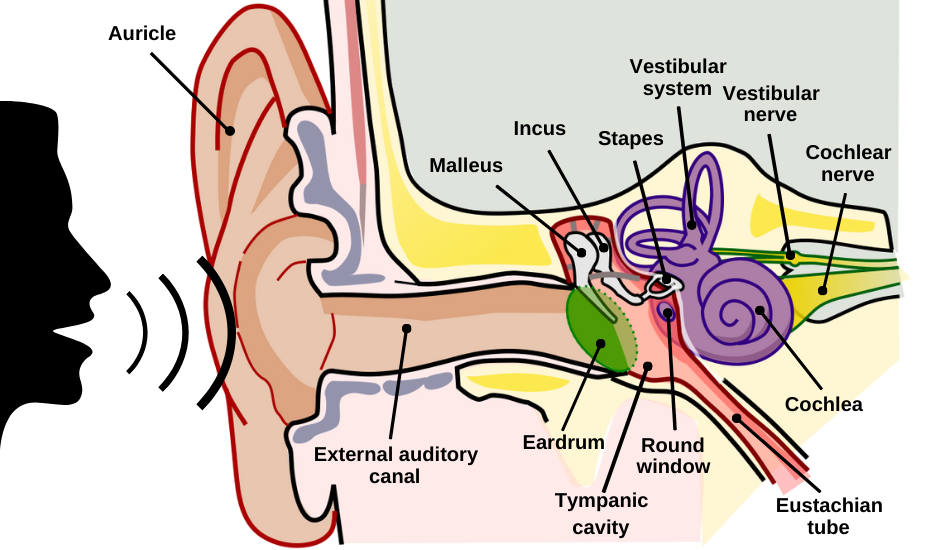
Similarly, sound as we perceive it is not an inherent property of reality. What we call “sound” is a pattern of air pressure waves traveling through space. These waves enter the ear canal, causing vibrations in the eardrum, which are then amplified by three small bones in the middle ear—malleus, incus, and stapes. These vibrations generate ripples in the cochlea, which stimulate hair cells. When these hair cells move, they generate electrical signals that travel to the brain via the auditory nerve. The brain processes these signals, constructing the perception of sound. In essence, sound does not exist as an independent phenomenon—it is merely our brain’s interpretation of mechanical vibrations.
Touch: Electromagnetic Forces Misinterpreted as Contact
Even the sensation of touch is an interpretation of reality rather than direct physical contact. When we touch an object, our atoms do not physically collide with the atoms of the object. Instead, the electrons in the atoms of our skin repel those in the object due to electromagnetic forces. This repulsion generates a signal that is processed by mechanoreceptors in our skin, which transmit electrical impulses through neurons to the brain. The brain interprets these signals as the sensation of touch, but in reality, direct contact never occurs.
Our senses—vision, hearing, touch, taste, and smell—function as tools to gather raw data from the environment. However, this data is meaningless until processed by the brain. What we experience as reality is merely an internally generated model based on external stimuli.
How Neural Pathways Help Us Perceive Reality
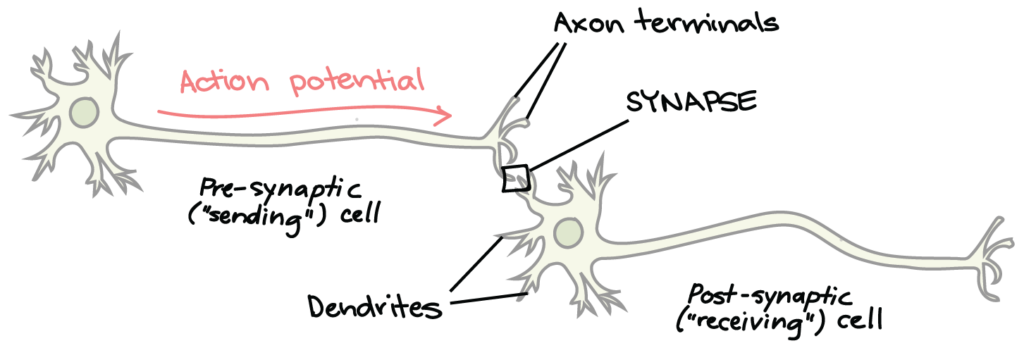
Neurons play a fundamental role in processing sensory input and transmitting information. In their resting state, neurons maintain a membrane potential of approximately -70 mV. However, when a stimulus such as light, temperature, touch, pain, pressure, or sound is detected, it alters the neuron’s permeability to ions. This change facilitates the movement of positively and negatively charged ions, including potassium (K+), sodium (Na+), and chloride (Cl-), across the neuronal membrane. If the resulting voltage change surpasses a threshold of -55 mV, an action potential is generated. This spike in voltage travels through the neuron’s axon toward the axon terminal, triggering the release of neurotransmitters into the synaptic cleft. These chemical messengers bind to receptors on the dendrites of adjacent neurons, converting the signal back into an electrical impulse. This process enables the propagation of neural signals throughout the brain, ultimately allowing us to perceive and react to stimuli.
Neural Pathways and Their Electronic Counterparts
Our neural pathways, responsible for processing sensory input and generating responses, share intriguing similarities with electronic circuits.
Neural Pathways vs. Electronic Circuits
- Neurons as Transistors: Neurons modulate action potentials (spikes of voltage) similar to how transistors amplify or switch electronic signals.
- Synapses as Resistors: Synaptic connections regulate signal strength like resistors control current flow in electronic circuits.
- Axons and Dendrites as Wires: These structures conduct electrical impulses between neurons, akin to how wires conduct electricity in circuits.
- Myelin Sheath as an Insulator: Myelin sheaths insulate axons, reducing signal loss, much like insulation around electrical wires.
- Action Potentials as Electrical Pulses: Neurons transmit signals as voltage spikes, analogous to how electric circuits send pulses of current.
- Neurons as Capacitors: Neurons maintain resting potential and fire when a threshold is reached, similar to how capacitors store and release charge.
The similarities strengthen the idea that the brain may be artificially designed.
However, there are critical differences between the brain’s neural pathways and traditional electronic circuits:
- Energy Efficiency: The brain consumes far less power than modern digital circuits.
- Plasticity: Neural pathways are highly adaptable and capable of rewiring, whereas conventional circuits are fixed.
- Parallel Processing: The brain processes information in parallel, whereas most digital circuits operate sequentially.
Neuromorphic Computing: Mimicking the Brain
Neuromorphic computing seeks to bridge the gap between biological neural networks and artificial circuits by developing hardware that mimics the brain’s structure and function. This approach is advancing artificial intelligence (AI) toward human-like efficiency and adaptability.
How Neuromorphic Computing Works
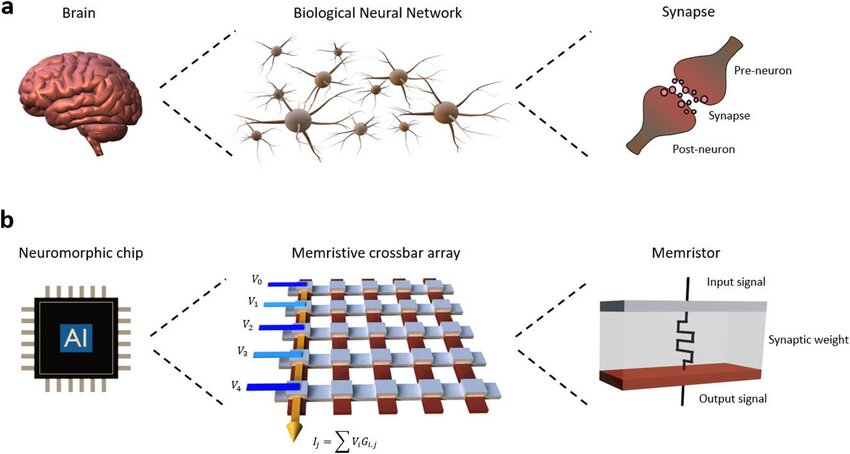
Neuromorphic computing employs Spiking Neural Networks (SNNs), which function similarly to biological neurons:
- Spiking Mechanism: Neurons in SNNs accumulate charge over time and fire electrical signals when reaching a threshold—just like biological neurons.
- Synaptic Adaptation: Artificial synapses in neuromorphic chips adjust their connection strengths, mimicking synaptic plasticity in the brain.
- Energy Efficiency: Neuromorphic chips, like Intel’s Loihi and IBM’s TrueNorth, operate on minimal power while handling complex tasks efficiently.
- Real-Time Processing: These chips enable adaptive learning, making them ideal for robotics, edge AI, and brain-computer interfaces.
The Implications for Consciousness and Reality
If neuromorphic computing succeeds in replicating the brain’s functions, could it eventually generate artificial consciousness? And if artificial consciousness is possible, what does that say about our own consciousness?
- Is Consciousness Machine-Generated? If we create an artificial entity that exhibits self-awareness, emotions, and decision-making, does that confirm that our own consciousness is merely a product of complex neural computations?
- Is the Brain artificially designed? If neuromorphic computing reaches the level of mimicking human cognition, it raises the question: Are our own neural pathways artificially designed in some way?
- Simulation Hypothesis: If our perception of reality is merely an interpretation by the brain, could it be that we are living in a sophisticated simulation? If our neural networks operate similarly to circuits, is it possible that we ourselves are part of an artificially designed system?
Conclusion
The human brain, often regarded as the most complex structure in existence, functions as an interface between raw sensory data and our perceived reality. While we take our experiences of color, sound, and touch for granted, they are merely interpretations shaped by our neural processing. The parallels between neural networks and electronic circuits further suggest that our cognitive processes might not be as unique as we assume.
With the rise of neuromorphic computing, humanity is on the brink of creating systems that mimic biological cognition. If artificial consciousness is achieved, it could challenge our understanding of the mind, reality, and even existence itself. Are we simply biological machines rendering a version of reality? Is the Brain Just a Reality-Rendering Artificially designed system? Or is consciousness something beyond computation, an intrinsic part of the universe itself? The answers remain elusive, but the pursuit of these questions may redefine our understanding of what it means to be human.
sources:
https://qbi.uq.edu.au/brain-basics/brain/brain-physiology/action-potentials-and-synapses